A Hydrogel Based Herbal Formulation Using Novel Combination for Wound Healing
Background and Aim: Wound healing is the dynamic process that takes place by regeneration or repair of broken
tissue. Rhubarb and borax is commonly used worldwide for good antiseptic, antifungal and antiviral properties. The
aim of the present study is to develop a chitosan based herbal formulation using rhubarb and borax for wound healing.
Methods: Borax and rhubarb loaded chitosan nanoparticles were prepared by ionic cross-linking process with sodium
lauryl sulphate. A Box-Behnken statistical design was employed to study the effect of independent variables, polymer
concentration (X1), cross-linker concentration (X2) and drug concentration (X3) on dependent 1 2 3 variables, average
particle size, zeta potential, percent entrapment and % drug release. The optimum nanoparticles were then loaded
into hydrogel. Wound healing effects of developed formulation was studied on excision wound models on rats.
Results: Average particle size and zeta potential of chitosan nanoparticles varied from 93-2225 nm and +30.82 to -
16.08 mV respectively, depending upon the polymer, cross-linker, and drug concentration. % entrapment and drug
release was also found to be affected by concentration of independent variables. By point prediction tool of design
expert, the optimum values of polymer concentration (0.0595%-0.07 %), cross-linker concentration (0.460%-0.5425%)
and drug concentration (0.7%-1%) were obtained with 85.0% to 108.67% experimental validity for different responses
with -8.67% to +14.99% prediction errors. On the basis of particle size, zeta potential and % entrapment,
FormulationC4 (0.0595% chitosan, 0.535% cross-linker and drug 1%) was selected among different checkpoint
formulation and proceeds for further studies. Hydrogel was developed using combination of polyvinylpyrrolidone
and carboxymethyl cellulose. Wound healing activity showed significant % wound contraction for hydrogel based
formulation when compared with control and standard.
Conclusion: The formulation successfully optimized using DESIGN EXPERT showed significant wound healing activity
when tested on rats.
How to Cite this paper?
APA-7 Style
Sultana,
S., Ali,
A., Ali,
A., Yusuf,
M., Khan,
M. (2022). A Hydrogel Based Herbal Formulation Using Novel Combination for Wound Healing. Research Journal of Phytochemistry, 16(1), 44. https://rjp.scione.com/cms/abstract.php?id=49
ACS Style
Sultana,
S.; Ali,
A.; Ali,
A.; Yusuf,
M.; Khan,
M. A Hydrogel Based Herbal Formulation Using Novel Combination for Wound Healing. Res. J. Phytochem 2022, 16, 44. https://rjp.scione.com/cms/abstract.php?id=49
AMA Style
Sultana
S, Ali
A, Ali
A, Yusuf
M, Khan
M. A Hydrogel Based Herbal Formulation Using Novel Combination for Wound Healing. Research Journal of Phytochemistry. 2022; 16(1): 44. https://rjp.scione.com/cms/abstract.php?id=49
Chicago/Turabian Style
Sultana, Shaheen, Amena Ali, Abuzer Ali, Mohd Yusuf, and Maria Khan.
2022. "A Hydrogel Based Herbal Formulation Using Novel Combination for Wound Healing" Research Journal of Phytochemistry 16, no. 1: 44. https://rjp.scione.com/cms/abstract.php?id=49

This work is licensed under a Creative Commons Attribution 4.0 International License.


